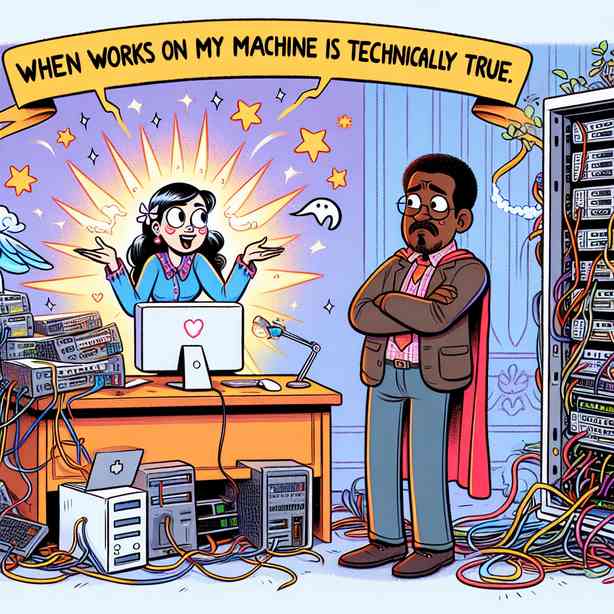
When “Works on My Machine” Is Technically True
In the world of software development, the phrase “It works on my machine” is often a source of frustration among teams. This statement usually implies that the code functions perfectly in the developer’s environment but fails to work as intended in other settings such as staging or production. However, this phenomenon isn’t merely a matter of poor coding or lack of testing; it speaks volumes about the complexities of software development and the various environments in which code must operate.
The first aspect to consider is the development environment itself. It’s important to understand that different machines may have varying configurations, operating systems, libraries, and dependencies. A developer’s local environment is often tailored to their specific needs, which may include particular versions of software or custom configurations that are not replicated elsewhere. This can lead to discrepancies and unpredictable behavior when code is moved to a different environment.
For instance, let’s say a developer is using a specific version of a programming language, a library, or even a tool that has not been updated across other environments. When the code is executed in an environment using an older version of the same library, it might not function correctly. This leads to the classic situation where the code works flawlessly on one machine but causes errors elsewhere. The notion that “it works on my machine” encapsulates not only the technical differences in environment setup but also highlights the underlying communication issues within teams.
Another factor contributing to the “works on my machine” phenomenon is dependency management. Software often relies on external libraries and tools that may not be properly managed across various environments. Package managers like npm, pip, and others help streamline dependency administration, but conflicts can still arise. A version mismatch can result in a feature working on a developer’s machine but breaking in production.
Employing containerization tools, such as Docker, can help mitigate these issues. By encapsulating all dependencies within a container, developers can create a uniform environment that can be replicated across machines, thereby reducing the likelihood of inconsistencies. When all team members use the same container, it becomes easier to ensure that the code will execute the same way no matter where it is run.
Moreover, it is also vital to practice thorough documentation and version control. When developers document their environments, including the versions of software, libraries, and configurations, they provide valuable information that can help others replicate their setups. This practice can help decrease confusion and lead to collaborative solutions when discrepancies arise. Pairing this with version control systems like Git can enhance collaboration, allowing teams to track changes and revert to working states as needed.
Testing also plays a crucial role in ensuring that software works across different environments. Writing comprehensive tests, including unit tests, integration tests, and end-to-end tests, helps confirm that the code behaves as expected across various conditions. Continuous integration and continuous deployment (CI/CD) practices can further ensure that code changes are automatically tested in multiple environments, catching issues early in the development process. This proactive approach significantly reduces the chances of encountering the dreaded “works on my machine” error later on.
Collaboration among team members cannot be overlooked. A culture of open communication and collaborative problem-solving fosters an environment where team members feel comfortable discussing discrepancies and working together to find solutions. By sharing insights about their development environments, team members can learn from each other and create more robust applications that work across various contexts.
In summary, while the phrase “It works on my machine” might ring true for many developers, it underscores a wider range of issues related to dependencies, environment differences, testing practices, and team collaboration. By recognizing the contributing factors and implementing best practices such as containerization, thorough documentation, comprehensive testing, and promoting collaborative environments, teams can work towards minimizing the occurrence of these discrepancies. Ultimately, the goal is to create software that is reliable and functional across all platforms—because in today’s interconnected world, software must be able to adapt and thrive in diverse environments. This way, developers can confidently say, “It works everywhere,” rather than resigning to the familiar frustration of localized success.


